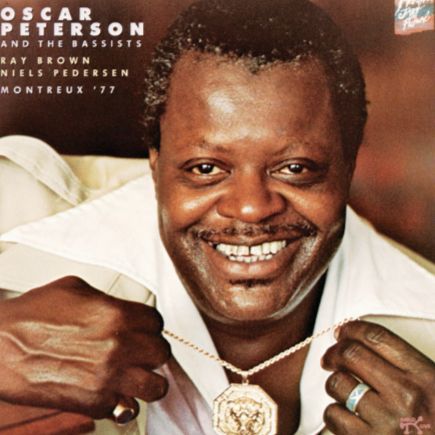Things Ain’t What They Used to Be: entre nostalgie swing et mutation blues
Composée en 1942 par Mercer Ellington, fils du Duke, avec des paroles de Ted Persons, Things Ain’t What They Used to Be s’impose rapidement comme un standard du répertoire jazz et blues. Si la paternité de la mélodie est attribuée à Mercer, l’arrangement initial pour l’orchestre revient vraisemblablement à son père.
L’histoire de cette composition s’inscrit dans un contexte singulier: en 1941, une grève de la Société américaine des compositeurs, auteurs et éditeurs (ASCAP) empêche Duke Ellington de diffuser ses propres œuvres à la radio. Contraint de contourner l’interdiction, il fait appel à de nouveaux compositeurs, notamment son fils Mercer et Billy Strayhorn, pour alimenter le répertoire de son orchestre.
Dans ce climat de tensions institutionnelles, Things Ain’t What They Used to Be résonne comme un commentaire ironique et lucide sur une époque en mutation. L’Amérique est alors plongée dans la Seconde Guerre mondiale, et le jazz, en pleine effervescence, incarne autant l’insouciance que la résistance culturelle. Le morceau reflète ce double mouvement: solidement ancré dans l’esthétique du swing, il intègre des éléments issus du blues, annonçant des évolutions stylistiques à venir.
Peterson, l’énergie du swing réinventée à Montreux
Enregistrée en direct le 14 juillet 1977 au Festival de Jazz de Montreux pour l’album Montreux ’77, cette version de Things Ain’t What They Used to Be réunit, autour d’Oscar Peterson, Eddie ‘Lockjaw’ Davis au saxophone ténor, Dizzy Gillespie et Clark Terry aux trompettes (ce dernier alternant au bugle), Niels-Henning Ørsted Pedersen et Ray Brown à la contrebasse, ainsi que Bobby Durham à la batterie.
Le morceau, enraciné dans la tradition du blues et popularisé par Ellington, trouve ici une nouvelle dimension, nourrie par la fougue créative des années 1970. Le saxophone d’Eddie Lockjaw Davis en souligne la profondeur émotionnelle, tandis que Gillespie et Terry, dans un dialogue aussi précis que jubilatoire, insufflent un souffle bebop incandescent. Les lignes de basse jumelées de Pedersen et Brown tissent une assise rythmique d’une rare densité, offrant au piano de Peterson un terrain d’expression idéal.
Oscar Peterson déploie ici tout son art: un jeu à la fois puissant, élégant et inventif, où la technique se met au service du swing et de la clarté du discours. Sa capacité à orchestrer les échanges tout en préservant la liberté de chaque soliste fait de cette interprétation un moment d’anthologie. À Montreux, Things Ain’t What They Used to Be devient un véritable manifeste du jazz vivant — exigeant, généreux et profondément humain.
Things Ain’t What They Used to Be: entre nostalgia swing y mutación blues
Compuesta en 1942 por Mercer Ellington, hijo del Duke, con letra de Ted Persons, Things Ain’t What They Used to Be se impone rápidamente como un estándar del repertorio jazzístico y blues. Aunque la autoría de la melodía se atribuye a Mercer, el arreglo original para orquesta parece haber sido realizado por su padre.
La historia de esta composición se inscribe en un contexto particular: en 1941, una huelga de la Sociedad Estadounidense de Compositores, Autores y Editores (ASCAP) impide a Duke Ellington difundir sus propias obras en la radio. Obligado a sortear la prohibición, recurre a nuevos compositores, entre ellos su hijo Mercer y Billy Strayhorn, para nutrir el repertorio de su orquesta.
En este clima de tensiones institucionales, Things Ain’t What They Used to Be resuena como un comentario irónico y lúcido sobre una época en transformación. Estados Unidos está inmerso en la Segunda Guerra Mundial, y el jazz, en plena efervescencia, encarna tanto la ligereza como la resistencia cultural. La pieza refleja este doble impulso: firmemente anclada en la estética del swing, integra elementos del blues, anticipando así las futuras evoluciones estilísticas.
Peterson, la energía del swing reinventada en Montreux
Grabada en directo el 14 de julio de 1977 en el Festival de Jazz de Montreux para el álbum Montreux ’77, esta versión de Things Ain’t What They Used to Be reúne, en torno a Oscar Peterson, a Eddie “Lockjaw” Davis en el saxofón tenor, Dizzy Gillespie y Clark Terry en las trompetas (este último alternando con el fliscorno), Niels-Henning Ørsted Pedersen y Ray Brown en el contrabajo, y Bobby Durham en la batería.
El tema, arraigado en la tradición del blues y popularizado por Ellington, adquiere aquí una nueva dimensión, alimentada por la energía creativa de los años setenta. El saxofón de Eddie Lockjaw Davis subraya la profundidad emocional de la pieza, mientras que Gillespie y Terry, en un diálogo tan preciso como exuberante, aportan un aliento bebop ardiente. Las líneas de bajo gemelas de Pedersen y Brown crean una base rítmica de notable densidad, ofreciendo al piano de Peterson un espacio de expresión ideal.
Oscar Peterson despliega aquí todo su arte: un estilo potente, elegante e inventivo, donde la técnica se pone al servicio del swing y de la claridad del discurso musical. Su capacidad para orquestar los intercambios sin limitar la libertad de cada solista convierte esta interpretación en un momento de antología. En Montreux, Things Ain’t What They Used to Be se erige en un auténtico manifiesto del jazz vivo — exigente, generoso y profundamente humano.
Things Ain’t What They Used to Be: tra nostalgia swing e mutazione blues
Composta nel 1942 da Mercer Ellington, figlio del Duca, con testo di Ted Persons, Things Ain’t What They Used to Be si impone rapidamente come uno standard del repertorio jazz e blues. Sebbene la paternità della melodia sia attribuita a Mercer, l’arrangiamento iniziale per orchestra sembra essere opera del padre.
La storia di questa composizione si colloca in un contesto particolare: nel 1941, uno sciopero della Società americana degli autori e compositori (ASCAP) impedisce a Duke Ellington di trasmettere le proprie opere alla radio. Costretto a trovare una soluzione alternativa, si affida a nuovi compositori, tra cui il figlio Mercer e Billy Strayhorn, per arricchire il repertorio della sua orchestra.
In questo clima di tensioni istituzionali, Things Ain’t What They Used to Be risuona come un commento ironico e lucido su un’epoca in trasformazione. L’America è coinvolta nella Seconda guerra mondiale e il jazz, in piena effervescenza, rappresenta al tempo stesso leggerezza e resistenza culturale. Il brano riflette questo doppio movimento: radicato solidamente nell’estetica dello swing, incorpora elementi del blues, prefigurando le evoluzioni stilistiche future.
Peterson, l’energia dello swing reinventata a Montreux
Registrata dal vivo il 14 luglio 1977 al Festival di Jazz di Montreux per l’album Montreux ’77, questa versione di Things Ain’t What They Used to Be riunisce attorno a Oscar Peterson un gruppo straordinario: Eddie “Lockjaw” Davis al sassofono tenore, Dizzy Gillespie e Clark Terry alle trombe (quest’ultimo alternando al flicorno), Niels-Henning Ørsted Pedersen e Ray Brown al contrabbasso, e Bobby Durham alla batteria.
Il brano, radicato nella tradizione del blues e reso celebre da Ellington, assume qui una nuova dimensione, nutrita dall’energia creativa degli anni Settanta. Il sassofono di Eddie Lockjaw Davis ne sottolinea la profondità emotiva, mentre Gillespie e Terry, in un dialogo tanto preciso quanto esuberante, infondono un soffio bebop incandescente. Le linee di basso parallele di Pedersen e Brown creano una base ritmica di notevole densità, offrendo al pianoforte di Peterson un terreno ideale d’espressione.
Oscar Peterson dispiega qui tutta la sua arte: un tocco potente, elegante e inventivo, dove la tecnica è al servizio dello swing e della chiarezza del discorso musicale. La sua capacità di orchestrare gli scambi preservando la libertà di ogni solista rende questa interpretazione un momento d’antologia. A Montreux, Things Ain’t What They Used to Be diventa un vero manifesto del jazz vivo — esigente, generoso e profondamente umano.
Things Ain’t What They Used to Be: between swing nostalgia and blues transition
Composed in 1942 by Mercer Ellington, Duke’s son, with lyrics by Ted Persons, Things Ain’t What They Used to Be quickly established itself as a standard in the jazz and blues repertoire. While Mercer is credited with the melody, the original orchestral arrangement is widely believed to have been crafted by his father.
The story of this piece unfolds in a unique context: in 1941, a strike by the American Society of Composers, Authors, and Publishers (ASCAP) prevented Duke Ellington from broadcasting his own compositions on the radio. To work around the ban, he turned to new composers—most notably his son Mercer and Billy Strayhorn—to supply material for his orchestra.
Within this atmosphere of institutional tension, Things Ain’t What They Used to Be resonates as an ironic and clear-eyed commentary on a changing era. America was then immersed in World War II, and jazz—flourishing in that moment—represented both carefree spirit and cultural resistance. The piece captures this dual energy: firmly rooted in swing aesthetics, it incorporates blues elements that foreshadow the stylistic shifts soon to come.
Peterson, the energy of swing reinvented at Montreux
Recorded live on July 14, 1977, at the Montreux Jazz Festival for the album Montreux ’77, this version of Things Ain’t What They Used to Be brings together an exceptional ensemble around Oscar Peterson: Eddie “Lockjaw” Davis on tenor saxophone, Dizzy Gillespie and Clark Terry on trumpets (the latter alternating on flugelhorn), Niels-Henning Ørsted Pedersen and Ray Brown on bass, and Bobby Durham on drums.
The piece, rooted in the blues tradition and popularized by Ellington, takes on a new dimension here, fueled by the creative energy of the 1970s. Eddie Lockjaw Davis’s saxophone highlights its emotional depth, while Gillespie and Terry, in a dialogue both precise and exuberant, inject a fiery bebop spirit. The twin bass lines of Pedersen and Brown create a rhythmic foundation of remarkable density, providing Peterson’s piano with an ideal expressive canvas.
Oscar Peterson displays the full measure of his artistry: a style both powerful and elegant, where technique serves the swing and the clarity of musical thought. His ability to orchestrate exchanges while preserving each soloist’s freedom makes this performance a true highlight. At Montreux, Things Ain’t What They Used to Be becomes a vibrant manifesto of living jazz — demanding, generous, and profoundly human.
Autres articles – Otros artículos – Altri articoli
Ray BROWN (13.10.1926–02.07.2002)
Eddie « Lockjaw » DAVIS (02.03.1922–03.11.1986)
Eddie DURHAM (19.08.1906–06.03.1987)
Duke ELLINGTON (29.04.1899–24.05.1974)
Mercer ELLINGTON (11.03.1919–08.02.1996)
Dizzy GILLESPIE (21.10.1917–06.01.1993)
Oscar PETERSON (15.08.1925–23.12.2007)


